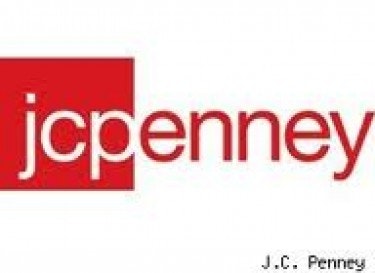
Johnson, the former retail head of Apple and creator of the company’s famous Apple stores, was seen by many investors as a new hope for a company that had suffered five years of stagnation after being dealt a crippling blow by the recession. But the company’s abysmal fourth quarter results have dashed those hopes, and shown investors that it take a miracle, instead of pure courage, to save the dying company.
Fourth Quarter Woes
J.C. Penney Company, Inc. (NYSE:JCP)’s top and bottom lines simply bled out during the fourth quarter.
It reported an adjusted loss of $1.95, compared to a profit of 21 cents in the prior year quarter. Analysts polled by Zacks had forecast a loss of 19 cents.
Gross profit also declined 43.6% to $924 million, due to gross margin contracting 640 basis points to 23.8%.
Revenue plunged 28.4% to $3.88 billion, also missing the consensus forecast of $4.16 billion.
Same-store sales declined 31.7%, compared to a 1.8% dip in the prior year quarter. Even Internet sales, which are usually a bright spot for brick-and-mortar retailers, dropped 34%. To put that into perspective, higher-end rival Macy’s grew its online sales by 48% during the fourth quarter.
In other words, J.C. Penney attracted fewer customers during the quarter, and as a result had to increase markdowns in order to clear its excess inventory. Its poor sales both online and offline show that people are simply avoiding the brand altogether – which many American shoppers have likely noticed on recent trips to the mall. J.C. Penney and its industry peer Sears Holdings Corporation (NASDAQ:SHLD) tend to draw far less traffic than more upscale competitors Macy’s, Inc. (NYSE:M) or Nordstrom, Inc. (NYSE:JWN).
All of this happened during the busy holiday season, when many retailers post their strongest results. For the full year, J.C. Penney Company, Inc. (NYSE:JCP) lost nearly a billion dollars, with $551 million lost during the holiday period.
Turnaround? What turnaround?
Investors thought Ron Johnson would magically bring in the traffic that Apple Stores effortlessly attract on a daily basis. But they overlooked two significant problems – Ron Johnson is certainly not Steve Jobs, and J.C. Penney doesn’t offer any cool, cutting-edge products to generate that kind of interest.
Johnson’s original “master plan,” which he unveiled last January, centered on two core ideas.
First, he created a “store in a store” business model, where more popular individual brands are gathered together into boutique locations around the store to generate higher traffic. The intention is to produce dozens of branded boutiques in each store by 2015. The first boutiques, which include Sephora, Levi’s and Izod, were moderately successful after they were introduced last summer, but that strength has since waned considerably.
Second, he introduced “everyday low prices” and eliminated sales events and coupons – even during the holiday season. This move was disastrous, and was the primary reason J.C. Penney customers avoided the store during November and December. As a result, the company had to slash prices on all its unsold merchandise, crushing its own margins.
On this second point, Johnson conceded defeat, stating that he will bring back promotional sales and discounts in the coming year.
Johnson’s changes, which also included a logo change and store reorganizations, also baffled long-time customers. With no clear explanation of its strategies to customers, and introducing four different marketing campaigns in 2012, the company alienated shoppers.
“We also made some big mistakes, and I take personal responsibility,” Mr. Johnson stated on a webcast.
“Some big mistakes”
Now that we understand how dire J.C. Penney Company, Inc. (NYSE:JCP)’s situation is, we should compare its fundamentals against its rivals to see if the company has any chance of bouncing back. Standing at the middle of mall, let’s compare J.C. Penney to four other commonly seen anchor stores: Macy’s, Inc. (NYSE:M), Nordstrom, Inc. (NYSE:JWN), Dillard’s, Inc. (NYSE:DDS) and Sears Holdings Corporation (NASDAQ:SHLD).
| Forward P/E | 5-year PEG | Price to Sales (ttm) | Price to Book | Debt to Equity | Return on Equity (ttm) | Profit Margin | |
| Macy’s | 9.22 | 0.82 | 0.58 | 2.63 | 114.53 | 22.28% | 4.82% |
| Nordstrom | 12.75 | 1.24 | 0.88 | 5.58 | 163.67 | 37.99% | 6.05% |
| Dillard’s | 10.42 | 2.03 | 0.56 | 1.93 | 41.82 | 16.71% | 4.98% |
| Sears | N/A | 0.09 | 0.12 | 1.51 | 98.36 | -28.06% | -2.33% |
| J.C. Penney | N/A | -0.39 | 0.30 | 1.22 | 94.04 | -27.43% | -7.59% |
| Advantage | Macy’s | Sears | Sears | J.C. Penney | Dillard’s | Nordstrom | Nordstrom |
Source: Yahoo Finance, March 3.
While Sears Holdings Corporation (NASDAQ:SHLD) appears to be the cheapest fundamentally, its negative margins, abysmal return on equity and lack of profitability all make it a dangerous investment. Meanwhile, Nordstrom, Inc. (NYSE:JWN), Macy’s, Inc. (NYSE:M) and Dillard’s are all flexing their muscles, and all three department stores share a similar characteristic – higher-end products with frequent promotional events to drive store traffic.
Top and bottom line growth over the past five years also tells a similar story.
EPS Diluted and Revenue TTM data by YCharts
J.C. Penney Company, Inc. (NYSE:JCP)’s fall has consistently been in line with declines at Sears Holdings Corporation (NASDAQ:SHLD). The stock price of these five companies simply serves as a closing argument for this cautionary tale of a diverging industry.
Looking Forward
Although it’s going to take a lot of effort to keep J.C. Penney afloat in 2013, Johnson hasn’t given up yet. He intends to push ahead with his boutique efforts, which yielded moderately positive sales on Valentine’s Day. The company’s new “Dear America” advertising campaign was also well received by retail experts. Johnson plans to continue job reductions across the board and also boost renovation efforts at the company’s 1,102 stores.
The Foolish Bottom Line
In the end, J.C. Penney is a mortally wounded company, and Ron Johnson has the daunting, thankless task of trying to keep its operations from going under. At this point, the company is outgunned by glitzier retailers Macy’s or Nordstrom, Inc. (NYSE:JWN) on the higher end, while being crushed by superstores like Wal-Mart and Target (which Johnson ironically also revived) on the discount end. Its boutique approach was an admirable effort, but the company wasted too much time and money with its unprofitable “everyday low prices” approach.
Although J.C. Penney may be a possible buyout candidate for another larger retailer or private equity firms, the company’s story is no longer one of growth – it’s simply one of survival.
The article J.C. Penney Needs a Miracle in 2013 originally appeared on Fool.com.
Copyright © 1995 – 2013 The Motley Fool, LLC. All rights reserved. The Motley Fool has a disclosure policy.







